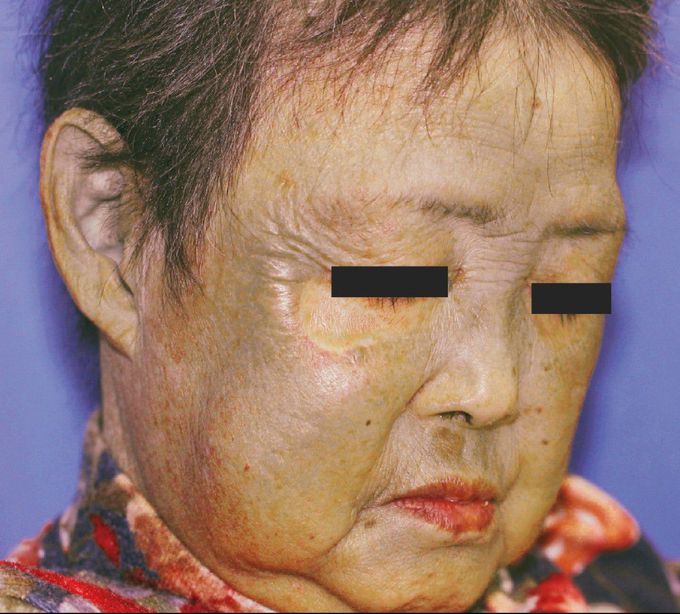


Minocycline-Induced Hyperpigmentation
A 75-year-old woman presented to the dermatology clinic with a 3-year history of gradually darkening facial skin. She had been taking minocycline for the past 4 years for treatment of chronic iliac osteomyelitis. On physical examination, diffuse blue–gray hyperpigmentation was observed on her face and ears, with sparing of an area of skin beneath her right eye, where she had received a skin graft from her chest wall after a traumatic injury 6 years before the current presentation. A diagnosis of type III minocycline-induced hyperpigmentation was made. In this condition, sun-exposed areas of skin that have a higher density of melanocytes than other areas produce more melanin under the influence of minocycline. The skin graft had been spared owing to its origin in the chest, which inherently contains fewer melanocytes than the face, and owing to the fact that normal epidermal melanocytes do not migrate between adjacent areas of skin. The minocycline was discontinued. The patient declined laser treatment and was advised to use sunscreen for protection from ultraviolet light. At a follow-up visit 8 months later, the facial hyperpigmentation remained unchanged.

